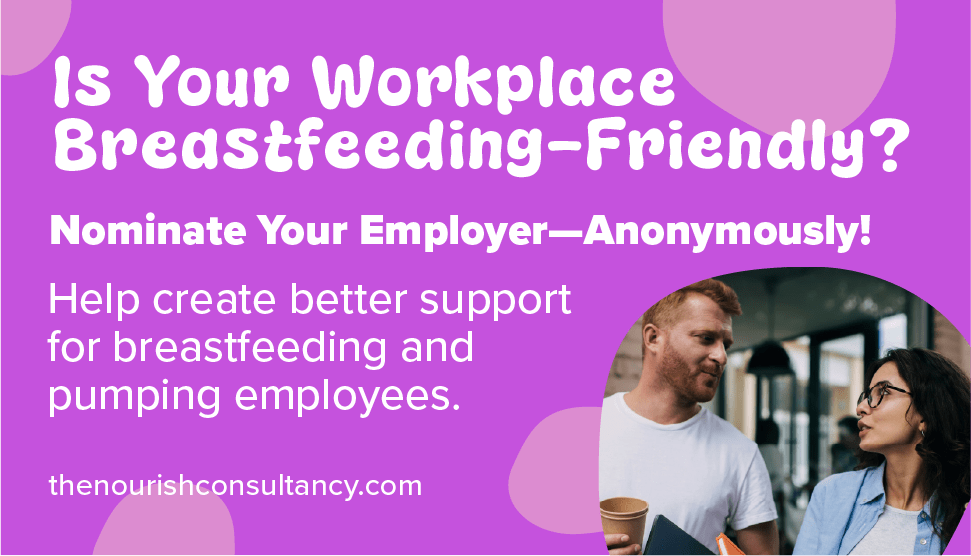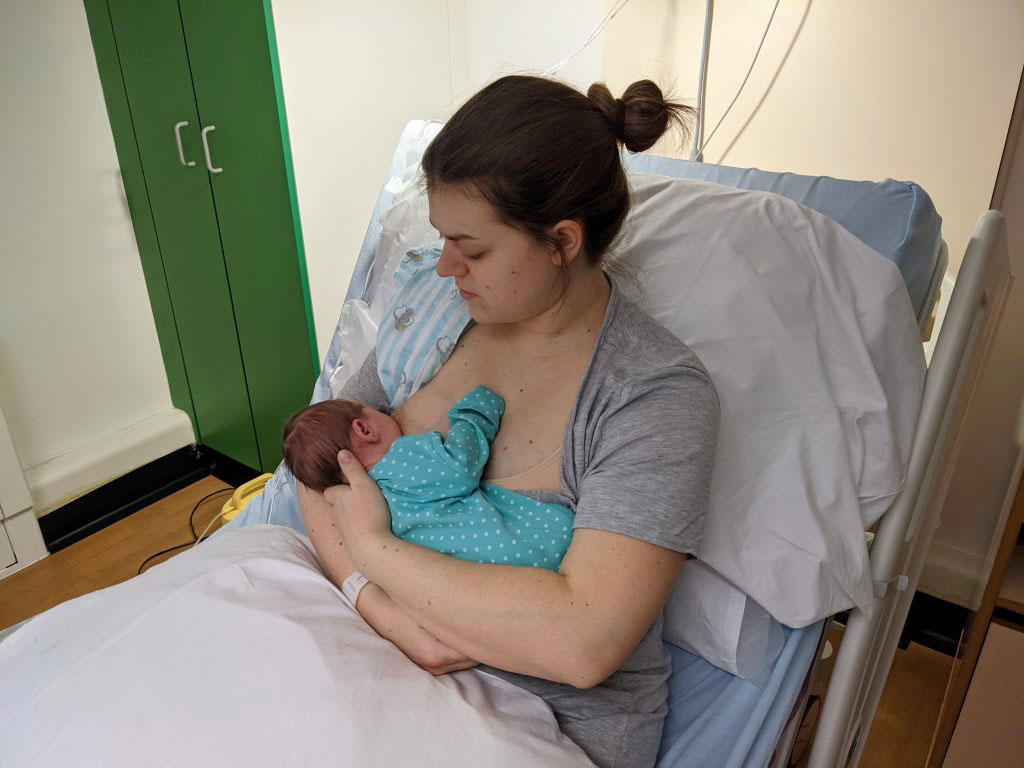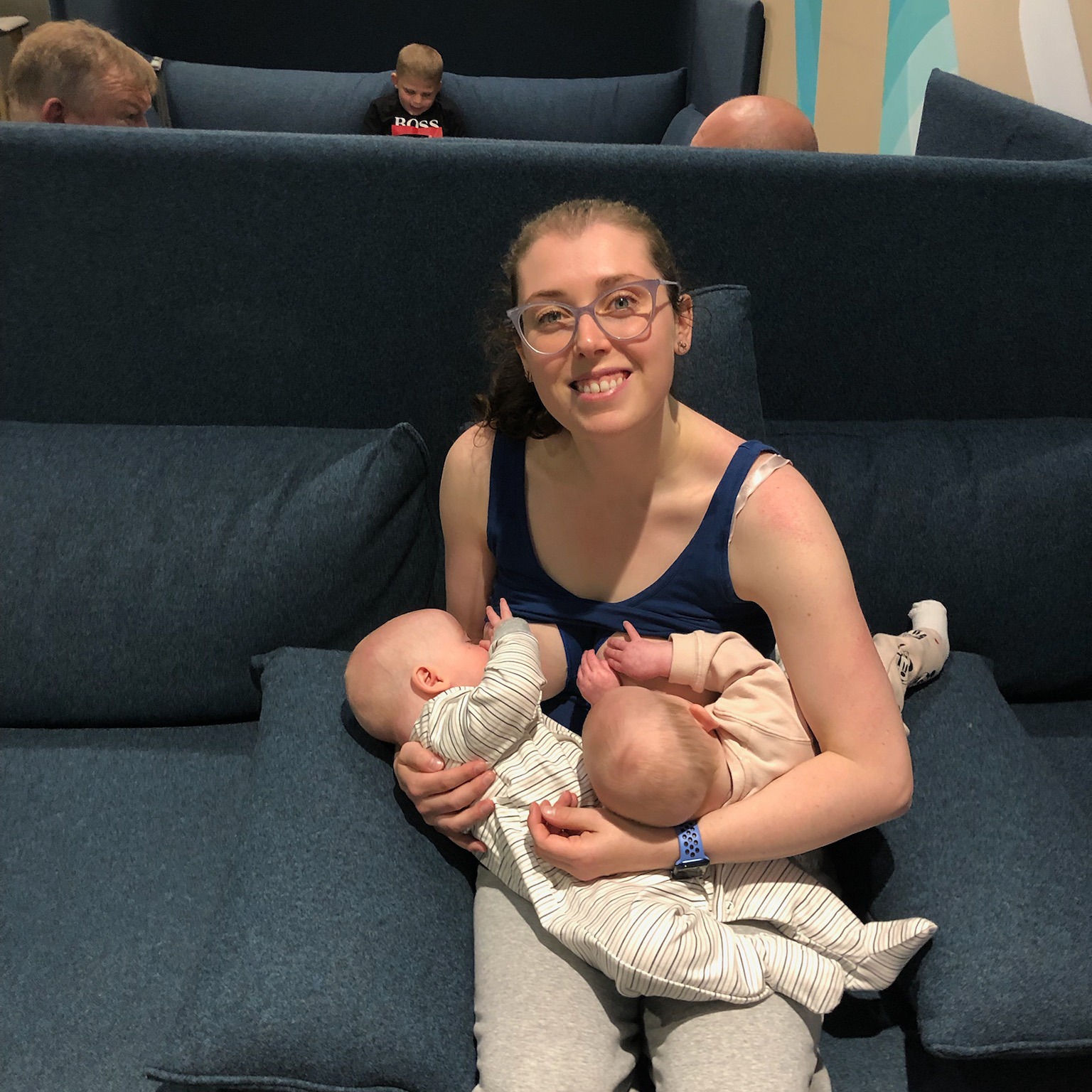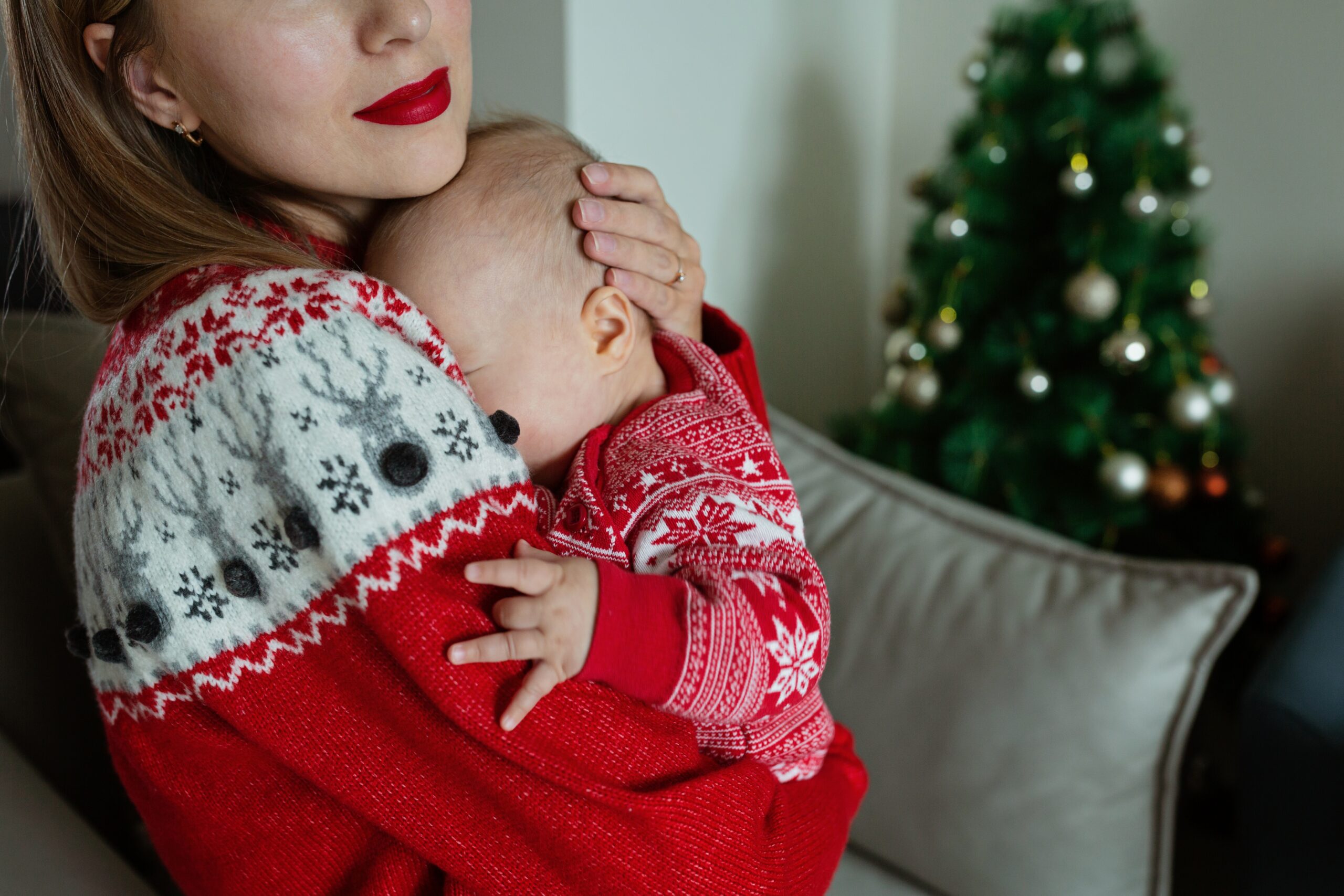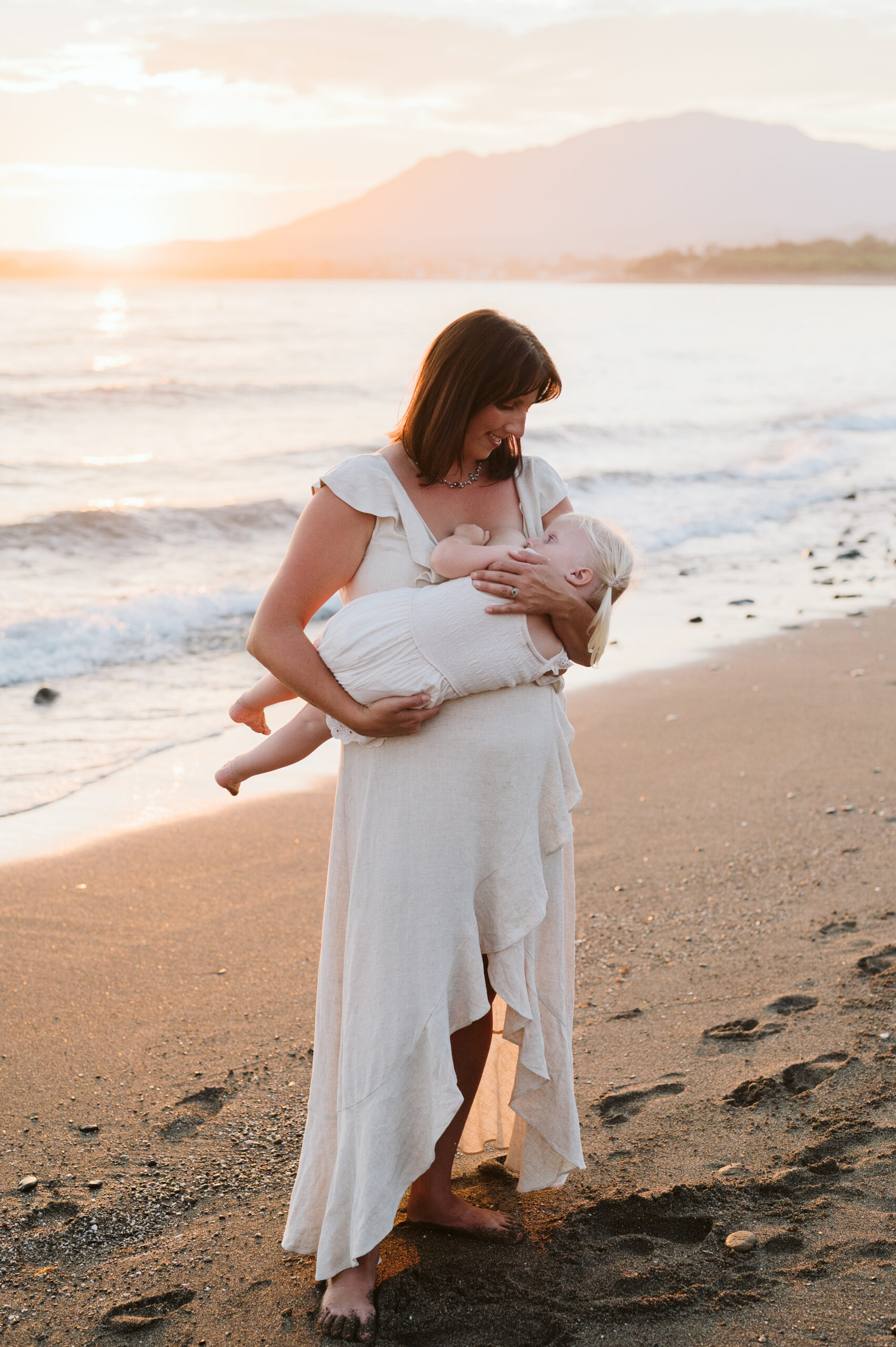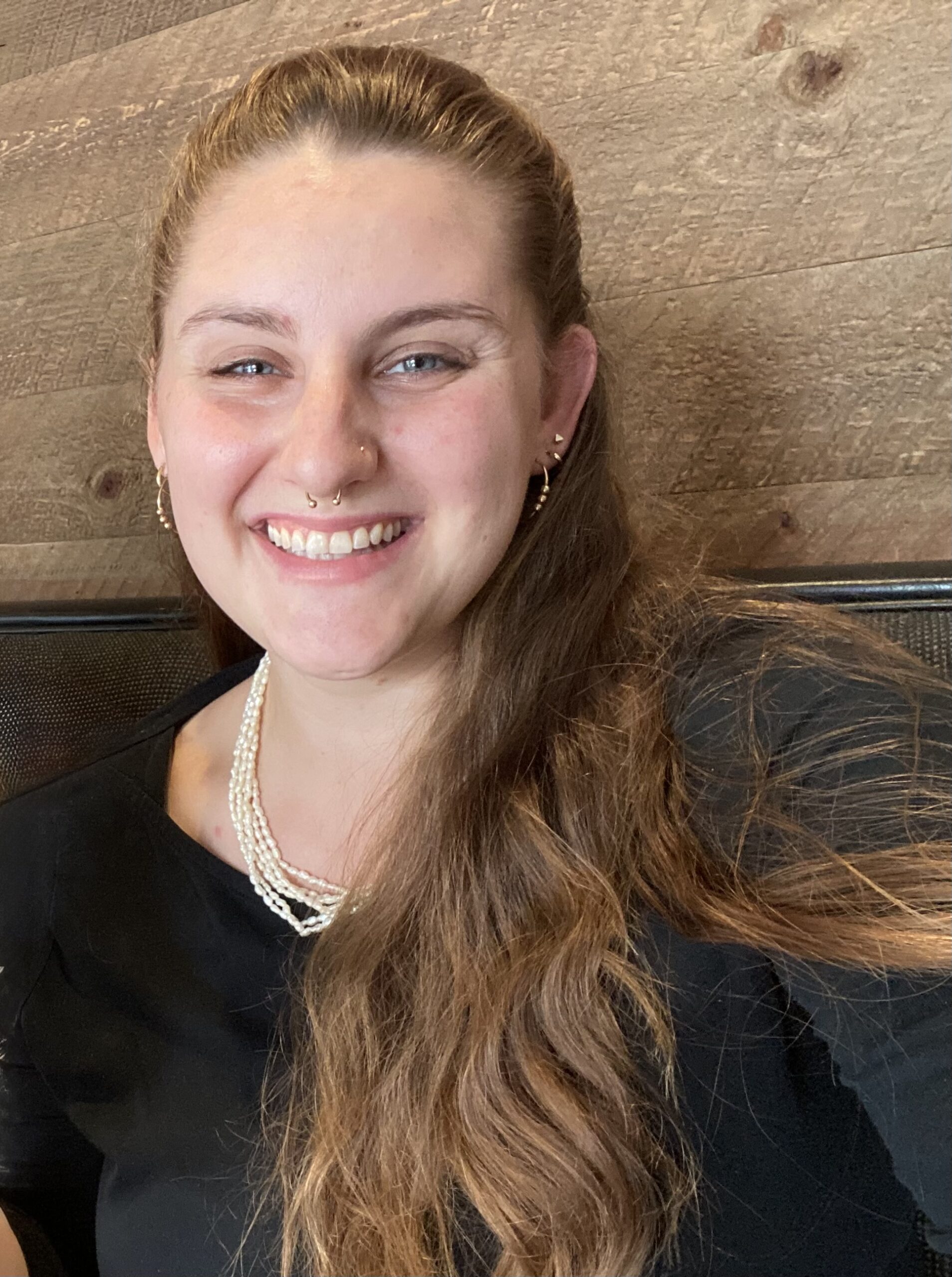I want to tell you about my breastfeeding journey from birth to 6 months, looking back on the ups and downs as someone who is now so much more informed and knowledgeable.
Two years on from that first latch in the hospital, I am now a qualified breastfeeding peer supporter with the Association of Breastfeeding Mothers. I hope that by telling my story, and sharing what I’ve learned along the way, that it will help others who find themselves in a similar position.
First thing’s first, I personally use the term ‘breastfeeding’ and as this post is about my journey that’s the language I’m going to use. However, I am conscious that for others terms such as ‘chestfeeding’ may be preferred and if I’m talking more generally, rather than about my personal experiences, then I will use both terms.
So without further ado, let’s start at the very beginning.
Preparing to breastfeed
I knew before my daughter was born that I really wanted to breastfeed. My choice was to breastfeed and I was lucky enough to get the support I needed to do so. I know not everyone is so lucky.
My breastfeeding journey started when I was pregnant and took an antenatal course that included a session on breastfeeding. While the one I did seemed good at the time, with hindsight it focussed on very basic positioning at attachment, and only really spoke about the cradle hold.
I thought I knew most of what I needed to know in order to successfully breastfeed my baby. My knowledge boiled down to this: position the baby while thinking about “CHIN”: Close, Head Free, In line, Nose to nipple. While this advice isn’t wrong, it didn’t prepare me for the challenges I ended up facing, and what to do if this didn’t work.
Colostrum harvesting was briefly mentioned
At one of my later antenatal midwife appointments I was given a couple of syringes for harvesting colostrum and told to Google how to do it. I was told it was good to do, but that was about it.
With hindsight, I wish I had better understood how amazing colostrum is. It can be so useful to have colostrum to hand in case you have issues establishing breastfeeding. From my basic reading I saw it as something ‘alternative’ (almost like a herbal remedy for babies – it isn’t, it’s so much more than that!), and while I expressed a small amount pre-birth I left it quite late to start.
I wish I had better understood how amazing colostrum is and how useful it can be
I would recommend to other pregnant people to take a more comprehensive course run by a trained lactation consultant. A lot of people refer to breastfeeding as being ‘natural’, however I think this is often confused with meaning easy.
Breastfeeding isn’t easy, it’s a skill you learn, some find it easier than others and it generally gets easier over time. But just because something is natural i.e. something we have evolved to do, doesn’t mean it is an innate skill. Breastfeeding is natural like walking, not like breathing; it’s something you learn to do.
The first feed
Right from the start, we ran into issues. During the first feed in that ‘golden hour’ after giving birth I was encouraged to try latching my baby, as is recommended. I tried the cradle hold like I’d been shown in my course, trying to remember all the advice like ‘nose to nipple’ and ‘chin to skin’. It took a couple of tries but I managed to latch her. Much to my delight she started sucking.
However, that delight and awe was short-lived as it quickly became painful. I was told by the midwife that her latch looked good and that she was swallowing and sucking well, a bit of pain was “normal”.
Spoiler alert: it wasn’t a good latch and pain, while common, is not normal. If you experience pain when breastfeeding/chestfeeding, stop and speak to someone qualified, either a trained breastfeeding counsellor or lactation consultant.
The midwife left us to it and disappeared for a while. I don’t remember how long it was before she came back, maybe half an hour. When she did return she was surprised that I hadn’t switched breasts. No one had told me that this was something I should do. So I did as I was told. Again it hurt, and again I was told that it was normal. She fed for less time on the second breast.
Pain from feeding was immediate
What I hadn’t appreciated was that the pain I was experiencing was actually dulled by the fact that I had only recently had entonox (gas and air) as pain relief when giving birth. It would have been far more painful otherwise.
Once I was ready to get up the midwives helped me to go to the toilet and have a bath. By this point, my nipples were clearly bruised and the left one (which I had fed off for longer) was bleeding. The midwife asked me if I had any nipple cream containing lanolin (as this is safe to use when breastfeeding) and helped me to apply some. While cream can help with healing, if you’re having to use it regularly then you should also be seeking help to resolve the underlying issue.
So, by the time my daughter was a couple of hours old I had bruised my nipples to the point where they were bleeding. I couldn’t bear her latching. As the pain relief from birth wore off the pain only got worse. I know now that I should have stuck to my instincts and stopped feeding. Skin-to-skin contact in that early period post-birth is just as important as the first feed and it’s better to get advice if something doesn’t feel right than carry on and cause more problems.
By the time my daughter was a couple of hours old I had bruised my nipples to the point where they were bleeding
The birth centre provided great support
A bit of context for you now. I gave birth in early 2021, right in the middle of one of the COVID-19 lockdowns in the UK. For various reasons that I won’t get into here that involved a forgotten COVID test. Four hours after giving birth I was discharged from the hospital and sent to a separate Birth Centre. My notes said that feeding had been established and there were no issues. The midwives were wrong on both counts.
It’s crazy and angering to think about it now but this is what saved my breastfeeding journey. Had it not been for that missed COVID test I don’t think I would be breastfeeding today.
Tongue tie assessment
Once I was admitted to the Birth Centre I was encouraged to feed my daughter again. It was excruciating. My already damaged nipples started to bleed again and I was in tears. The midwife immediately saw that things weren’t right. Although we tried different positions (cradle, rugby hold, koala), we couldn’t deepen her latch enough.
The midwife called the lactation specialist to help. They observed my daughter feeding and saw that she wasn’t latching properly or swallowing effectively. Both are signs of an underlying problem.
100% tongue tie was diagnosed
After doing a full assessment, including examining her mouth and feeling her tongue movement my daughter was diagnosed with a 100% tongue tie.
To explain, the percentage refers to how far up the tongue her frenulum was attached. 100% means it came right to the tip. The percentage in and of itself doesn’t indicate how severe a tongue tie is. You can have a tie that is attached at the posterior (being a lower percentage), but that is really tight, causing severe feeding issues. You can also have an anterior tie (a higher percentage like my daughter’s) that is not as restrictive and that baby may be able to feed without an issue.
A tongue tie assessment should involve an observation of the baby feeding, as well as an assessment of tongue movement and function, during which the practitioner should feel inside the baby’s mouth. Just looking in a baby’s mouth is not enough for a proper diagnosis.
A tongue tie assessment should involve an observation of the baby feeding, as well as an assessment of tongue movement and function
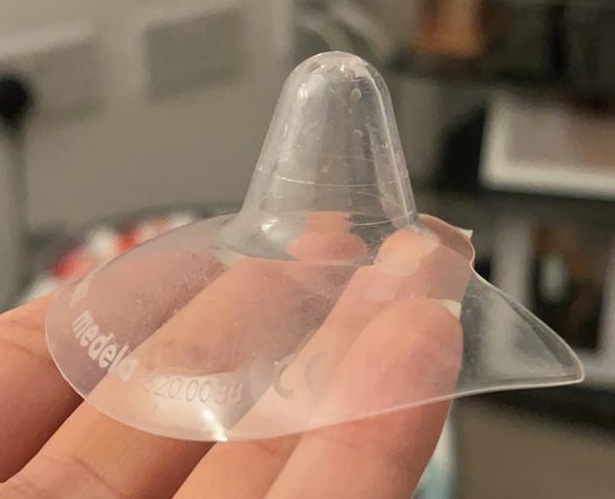
Nipple shields were advised
Just because a baby has a tongue tie does not mean it needs to be cut. With work on positioning and attachment under the supervision of a qualified lactation specialist then some babies are able to feed effectively. Others are able to latch with the help of nipple shields, but again these should only be used when you are receiving support from someone who is qualified.
Just because a baby has a tongue tie does not mean it needs to be cut.
For example, I myself have a tongue tie that means I can’t stick my tongue out very far and can’t lick an ice cream properly, however my mum was able to breastfeed me. It may also be an issue of anatomy. I have relatively flat nipples, for example.
Let me be clear, having flat or inverted nipples does not mean you cannot breastfeed. It also doesn’t mean you’ll have trouble breastfeeding. However, depending on your baby, it may be that it makes it a bit harder to achieve a deep latch. And if your baby is also struggling, for example, due to a tongue tie, it might make latching even more of a challenge.
Flat nipples made things harder
My anatomy also impacted my ability to breastfeed. I couldn’t believe how little I knew about my body, especially my breasts until I gave birth. I had seen pictures of breasts and nipples, but none had looked like mine. My nipples have always been very flat by comparison and I naively assumed that it was pregnancy and breastfeeding that would make them change shape. This assumption may sound silly to you, but I just didn’t know any better.
It turns out that I have relatively flat nipples. This isn’t in itself a problem, however, in conjunction with a tongue-tied baby, it added to her difficulty feeding. I was measured and given shields (to ensure they fit correctly). However, after another feed, it was clear to the lactation specialist that this wasn’t going to be sufficient. My daughter still wasn’t able to feed effectively.
Three-step approach to feeding baby
The midwives and lactation specialist therefore took the following approach:
- Feed the baby
- Protect my milk supply
- Resolve the tongue tie
The first part of the approach was to feed the baby. I was shown how to hand express colostrum and feed this to my daughter using the syringe / finger-feeding method. I had also expressed a little bit of colostrum prior to giving birth which we had frozen and were able to defrost and use. If I had my time again, I would try much harder to express and store more, just in case.
I was shown how to hand express colostrum and feed this to my daughter using the syringe / finger-feeding method.
Expressing milk and bottle feeding
Over the next couple of days, as my daughter fed more I used up the colostrum I had expressed beforehand and it became harder for me to express enough before each feed. The midwives discussed this with me and my husband and I decided to feed B a combination of expressed colostrum and formula, with the midwives guiding us on how much to give. I don’t regret my decision, my main focus was not adding things like significant weight loss or possible jaundice to our list of problems.
I understand that this wouldn’t be everyone’s choice but it was what felt right to us and we made an informed choice. There are other options, such as looking into obtaining donated breastmilk or expressing more frequently
We also decided to use bottles as volumes increased, but you can cup-feed a baby from an open cup from birth if you want to avoid bottles. The only thing I didn’t do as I didn’t know much about it was responsive and paced bottle feeding. I would definitely do that if I were in this situation again.
If I were to have another baby, I would definitely try to express more colostrum before giving birth.
Triple feeding was brutal
The second part was to protect my milk supply. This involved doing what is called triple feeding. You feed your baby any expressed colostrum / milk that you have, top up with donated milk / formula and then express in order to store some colostrum / milk for the next feed and stimulate milk supply (as the baby would be doing this if they were feeding at the breast).
They showed me how to hand-express colostrum and finger feed using a syringe. In my case when hand expressing became less effective I used a hospital grade electric pump and my manual hand pump to stimulate my supply. I used my manual pump more as the electric pump caused my damaged nipples to bleed again. But the electric pump would have been better at stimulation.
This process is so, so, so hard. It’s tiring and often took an hour and a half to do all three parts of the feed, meaning I had very little time before I had to start the next feed. Newborns should be fed at least every three hours, but typically more than this when you’re feeding on demand. So you get very little and very fragmented sleep. It’s brutal and really isn’t sustainable. I take my hat off to anyone who has to do this for any length of time.
Deciding on a frenulotomy
The third part of the approach is to solve the underlying problem. My husband and I were told about the frenulotomy procedure, in which the tongue tie is cut. From our point of view the benefits far outweighed the potential risks which we considered to be minimal. We therefore agreed to go ahead with the procedure.
We were lucky, as it was identified so early the lactation specialist was able to go ahead with the procedure on day two. They took B for maybe 15 minutes and by the time they’d walked her back into our room she was no longer crying. She went straight onto the breast and while that initial feed was uncomfortable it was much better than before.
Discharge from hospital
By day four we were able to reliably get a good latch, albeit with the nipple shields. It was then that I was discharged from the Birth Centre. You might think this is the end of my story, but no. I’m going to tell you a bit about the aftermath as I think it’s important to emphasise that getting a tongue-tie cut is not an easy fix.
By day four we were able to reliably get a good latch, albeit with the nipple shields.
From day four, as soon as we were able to get B to latch reliably with the nipple shields. We stopped using bottles and formula completely, which coincided with my discharge from hospital. I know a lot of people like me get discharged while still combination feeding / triple feeding and struggle to move away from giving formula top-ups. I don’t think it occurred to us that going cold turkey might cause problems, such as weight gain issues. By that point I was so determined to breastfeed I didn’t think twice.
If you do decide to supplement then make sure you get support from someone who is qualified around volumes and also on how to transition away from top-ups once the underlying feeding issues have been resolved.
Luckily B was fine. Because of the top-ups we’d given she hadn’t lost a significant amount of her birth weight. The midwives and health visitors were happy with her on her day 5 check and during their visit to our house the week after. She quickly regained her birth weight and we didn’t look back.
The first month was tough
The first night at home was tough; my milk had come in and my daughter wanted to feed constantly. This was a shock to the system.
As a first-time mum I didn’t appreciate how in those initial days babies tend to be a bit more snoozy, then as your milk comes in they want to feed more and cluster feeding starts. This is when a baby feeds for what feels like hours, often in the evening (sometimes called ‘the witching hour’). They can seem satisfied and then a very short time later want to feed again. They’re often agitated and fussy at the breast. This is so normal! They do it to help increase your milk supply. The more they feed the more milk you produce.
As a first-time mum I didn’t appreciate how in those initial days babies tend to be a bit more snoozy, then as your milk comes in they want to feed more and cluster feeding starts.
The first month was stressful. I didn’t keep a diary, but I did write some notes and I’m glad I did. They aren’t easy to read, but they make me appreciate how far I’ve come.
It took weeks for the pain to subside
Even with the healing powers of breastmilk and lanolin it took my nipples a few weeks to fully heal. Breastfeeding continued to be toe-curlingly painful for a good few weeks. I don’t know exactly when the pain stopped, or when I stopped having to regularly use the cream, but by six weeks or so we were much more settled. Although with hindsight I wish I’d managed to speak to a Breastfeeding Counsellor or Lactation Consultant in person as there may have been more I could have done.
Unfortunately, COVID meant that support was limited to what could be provided over zoom. I take my hat off to the amazing volunteers in that time who continued to provide support and fill in the gaps even when everything had to be virtual.
Two months in and things got better
As you can tell, I was not one of the people that found breastfeeding relaxing from the start. It wasn’t until about 2 months in that I actually began enjoying it. It was and still is one of the most rewarding things I’ve ever done. In the same way that my daughter feeds for comfort, it’s also comforting for me.
We carried on using the shields. Every couple of weeks I tried her without them but it was so painful. She would just slip off my breasts, so I persevered with them. It was still painful until she was around 6 weeks old. At the time I still didn’t realise this wasn’t normal. I wasn’t told to do any oral exercises with her, which I now know I probably should have.
Due to the tongue tie she hadn’t learned to suck while she was in the womb. She was effectively learning to suck from scratch after birth. Oral exercises can help with this, but I didn’t know about them. With older babies chew toys that they can put in their mouth and which encourage them to move their tongue can also be really good tools.
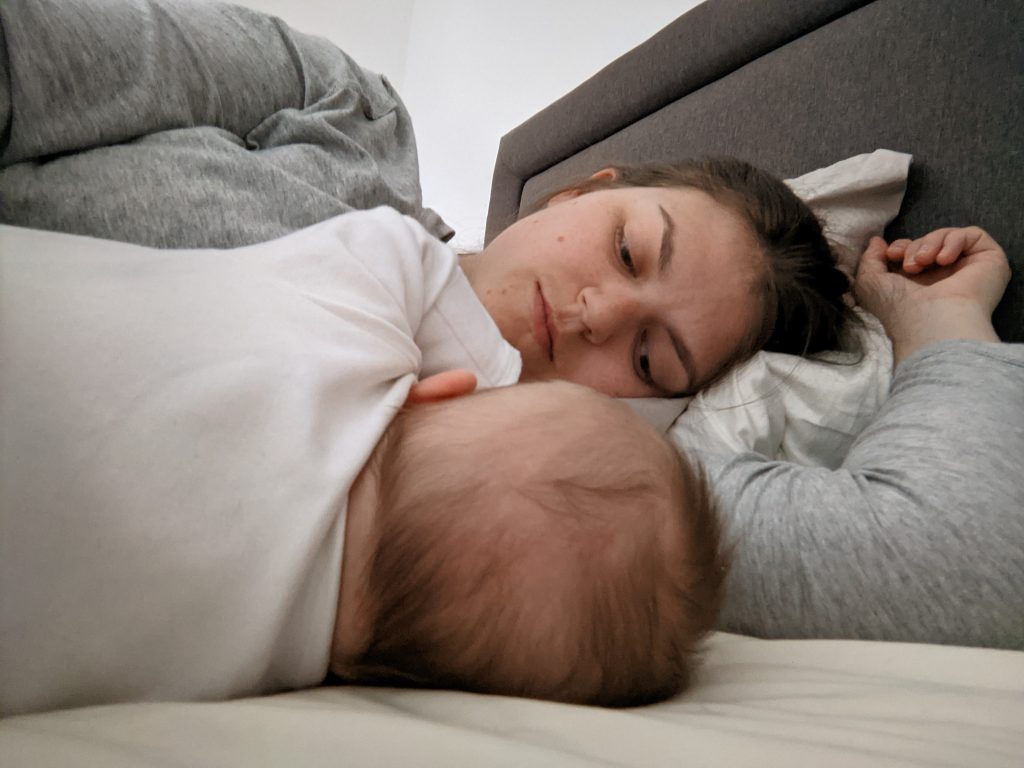
Muscle tension from tongue-tie
Something else I didn’t know at the time was that tongue ties are often linked to muscle tension, especially in the neck and upper body. I was always surprised at the fact that B had what I thought was good neck control for a newborn. She was able to hold her head up very early and rolled from front to back at just 7 weeks old. I now know that this isn’t normal and isn’t a sign of more advanced development. It’s actually a sign of muscle tension.
Something else I didn’t know at the time was that tongue ties are often linked to muscle tension, especially in the neck and upper body.
Trained cranial osteopaths can use light touch massage, adapted for babies, to help relieve this tension. She seems fine now, and I haven’t noticed any issues with her swallowing or speech. However, if I had my time again I would take her to see someone.
My fourth trimester ended with me finding a way to get my daughter to latch without needing the nipple shield for the first time. Out of desperation, I laid down in bed with her next to me as she had been up for hours. It took a while to ditch them completely, but knowing it was possible gave me hope.
Sleep issues and a lack of advice
The next couple of months are a blur. We ended up bed-sharing to get me some sleep, albeit still rather broken. I got mastitis and started trying again to ditch the nipple shields (as they can be a contributing factor). This was without success.
Something else that might be explained by the tongue tie and tension is her sleep. For the first month we could hardly put her down and she slept almost exclusively in our arms or lying on us. If I tried to lie her in the cot or the bassinet on the buggy she would wake or just cry until she was picked up. We tried to follow the safe sleep advice of lying her on her back but she just wouldn’t settle. We effectively took the days in shifts so that one of us was always awake when she was asleep and the other slept. I was lucky my husband had a month off work.
When he went back to work, in order for me to get any sleep we resorted to lying her on her side in her cot. Once she learned to roll she slept on her front from about 8 weeks old. Again, I didn’t know anything different. I didn’t realise this could potentially have been related to muscle tension. Every time I mentioned the sleep problems to a healthcare professional, be they a health visitor, midwife or GP, I was told this was normal for a baby in the third trimester.
Let me be clear, I DO NOT advise that you do what I did. If I had known then what I know now I would have sought help. I would have seemed out a Cranial Osteopath and a Lactation Consultant or a Pediatrician who was experienced in infant sleep and feeding. I’m pretty sure my daughter’s sleep issues were a result of her tongue tie and that there was something that could have been done.
Worry over SIDs
As it is, she’s slept on her front since she was a couple of months old. In those early months, I found it so stressful as I was really worried that she might suffocate or that by not following the safe sleep advice we were putting her at a higher risk of SIDS. As she’s got older my worry has subsided, but I wish my concerns hadn’t been dismissed at the time.
Things like mouth-breathing, swallowing problems and issues when eating solid food can also be signs that there’s an underlying issue relating to tongue-tie and oral function. If you’re at all worried, have the confidence to persist and find help, even if you are initially dismissed. I know first-hand how hard this can be when you’re in the middle of the fog of the fourth trimester. With hindsight, and if ever I were in this situation again, I would push harder to get answers. Hindsight is a wonderful thing.
Things like mouth-breathing, swallowing problems and issues when eating solid food can also be signs that there’s an underlying issue relating to tongue-tie and oral function.
Mastitis happened twice
During the first five months of B’s life I got mastitis twice. While you can get mastitis when feeding without shields, using them can increase the risk of it. This is because they can often make it harder for all parts of the breast to drain properly, thus leading to blocked ducts and mastitis if you’re unlucky. It’s why using them for extended periods of time isn’t recommended. If you do need to use them for longer, you’re advised to do so under the supervision of a qualified Lactation Consultant.
I kept in regular contact with a Breastfeeding Counsellor who helped me when B was just a couple of weeks old and struggling with the shields. I made the informed decision to carry on using the shields as at the time they were the only way I could continue breastfeeding.
If you need shields make sure you’re getting regular support. As your baby grows their latch changes. You may need to rethink how you’re latching and whether shields are still beneficial. Shields aren’t an easy solution. They won’t help with sore nipples and shouldn’t be used without qualified support. But equally, in some circumstances, they can save a breastfeeding journey like mine.
I made the informed decision to carry on using the shields as at the time they were the only way I could continue breastfeeding.
Finally, the nipple shields were no longer needed
Sometime in the week before she turned 6 months old she decided she didn’t need the nipple shields anymore. She started getting more frustrated when feeding and refusing to feed with them. She began pulling them off herself! It felt strange but it didn’t hurt and within a week we were no longer using them.
I don’t remember exactly when the last feed with them was. I assumed each day there would be another feed where she would be tired and need them. At some point, I realised it had been a day or two since I’d used them, even overnight.
So I don’t know precisely when we stopped. But by the time she was 6 months old we were fully feeding without them. It made feeding so much easier, but I’m glad I persevered with them.
A reminder babies do things in their own time
In the early weeks, I felt a lot of pressure to stop using the shields as soon as possible. But I’m forever grateful for one piece of advice I was given, which was that babies do things ‘in their own time’. I’m glad I didn’t force the transition. I think if I had I may have struggled to keep breastfeeding. Just like babies learn to crawl, walk and talk at different rates, it just took my daughter a little longer to get comfortable with breastfeeding. Not that surprising really, given how we started.
I’m forever grateful for one piece of advice I was given, which was that babies do things ‘in their own time’.
In my notes from around that time, I talked about how much I loved breastfeeding her (and still do). At some point during those hazy months, it had transitioned from being a struggle to relaxing.
To 6 months and beyond
Stay tuned for part two of my breastfeeding journey in which I talk about breastfeeding beyond 6 months.

